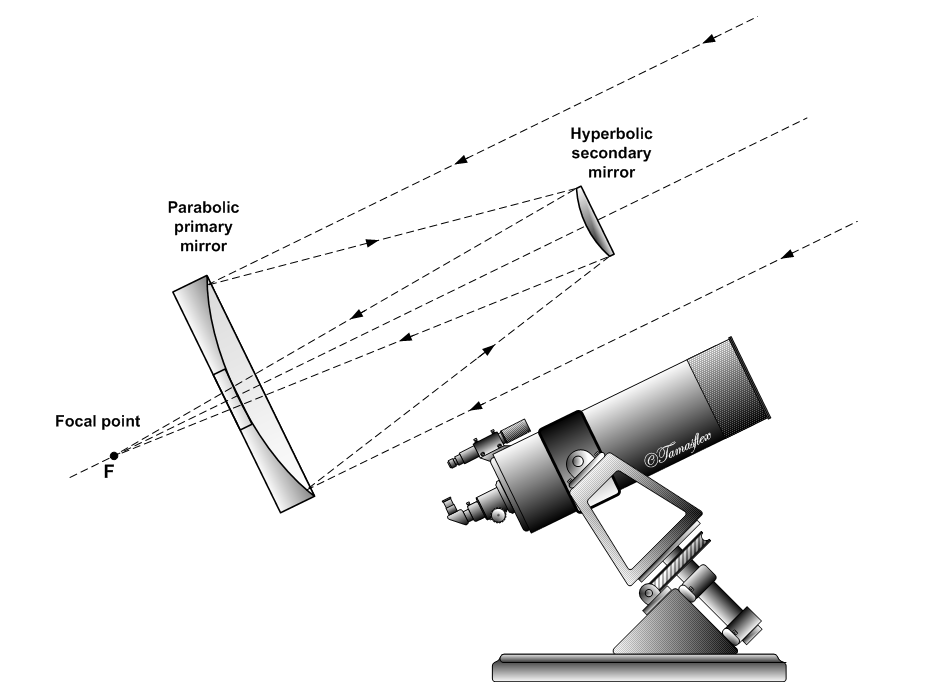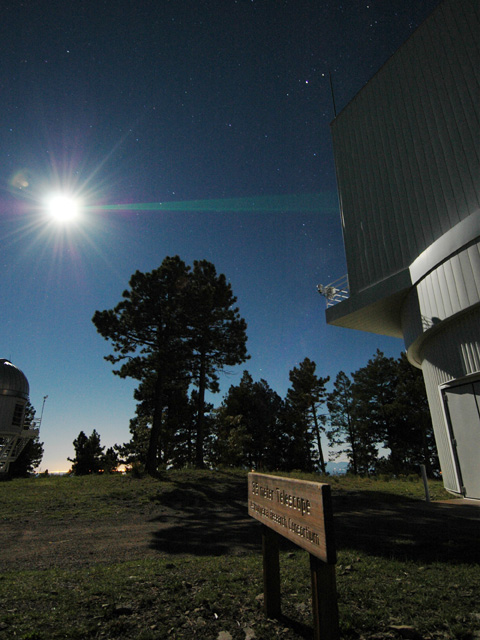|
Manastash Ridge Observatory
The Manastash Ridge Observatory (MRO) is an astronomical observatory built in 1972 by the University of Washington. It is located in a remote area approximately west of Ellensburg, Washington, at an altitude of 3930' (1198 m), a longitude of 120.7278 degrees West, and a latitude of +46.9528 degrees, and can be reached by dirt roads from Ellensburg or Selah, Washington, Selah. The observatory features a Ritchey-Chrétien telescope built by Boller and Chivens. Currently, the observatory utilizes an Andor Technology, Andor thermo-electrically cooled CCD camera in conjunction with the primary telescope. Initially used for professional and graduate research, the observatory is now used mostly by undergraduate students for instruction and research. For a brief time there was talk of stopping funding for MRO as the University of Washington Astronomy Department focus on the Apache Point Observatory, but funding did continue and MRO is still in use. The Manastash Ridge Radar (MRR) is ... [...More Info...] [...Related Items...] OR: [Wikipedia] [Google] [Baidu] |
Manastash Ridge Radar
The Manastash Ridge Radar is a passive radar which uses commercial FM broadcasts to study ionospheric turbulence as well as meteor trails, and aircraft. The radar is passive and bistatic; there are receivers located at the University of Washington as well as at Manastash Ridge, which are synchronized to permit coherent operation. It is named for its location at the Manastash Ridge Observatory in the eastern foothills of the Cascade Mountains, near Ellensburg, Washington in the United States. See also * Passive radar Passive radar (also referred to as parasitic radar, passive coherent location, passive surveillance, and passive covert radar) is a class of radar systems that detect and track objects by processing reflections from non-cooperative sources of illu ... External links More information about the radar, as well as live data output Astronomical observatories in Washington (state) Passive radars University of Washington Buildings and structures in Kittitas ... [...More Info...] [...Related Items...] OR: [Wikipedia] [Google] [Baidu] |
Buildings And Structures In Kittitas County, Washington
A building or edifice is an enclosed structure with a roof, walls and windows, usually standing permanently in one place, such as a house or factory. Buildings come in a variety of sizes, shapes, and functions, and have been adapted throughout history for numerous factors, from building materials available, to weather conditions, land prices, ground conditions, specific uses, prestige, and aesthetic reasons. To better understand the concept, see ''Nonbuilding structure'' for contrast. Buildings serve several societal needs – occupancy, primarily as shelter from weather, security, living space, privacy, to store belongings, and to comfortably live and work. A building as a shelter represents a physical separation of the human habitat (a place of comfort and safety) from the ''outside'' (a place that may be harsh and harmful at times). buildings have been objects or canvasses of much artistic expression. In recent years, interest in sustainable planning and building practi ... [...More Info...] [...Related Items...] OR: [Wikipedia] [Google] [Baidu] |
Astronomical Observatories In Washington (state)
Astronomy is a natural science that studies celestial objects and the phenomena that occur in the cosmos. It uses mathematics, physics, and chemistry in order to explain their origin and their overall evolution. Objects of interest include planets, moons, stars, nebulae, galaxies, meteoroids, asteroids, and comets. Relevant phenomena include supernova explosions, gamma ray bursts, quasars, blazars, pulsars, and cosmic microwave background radiation. More generally, astronomy studies everything that originates beyond Earth's atmosphere. Cosmology is a branch of astronomy that studies the universe as a whole. Astronomy is one of the oldest natural sciences. The early civilizations in recorded history made methodical observations of the night sky. These include the Egyptians, Babylonians, Greeks, Indians, Chinese, Maya, and many ancient indigenous peoples of the Americas. In the past, astronomy included disciplines as diverse as astrometry, celestial navigation, observational ... [...More Info...] [...Related Items...] OR: [Wikipedia] [Google] [Baidu] |
List Of Astronomical Observatories
This is a partial list of astronomical observatories ordered by name, along with initial dates of operation (where an accurate date is available) and location. The list also includes a final year of operation for many observatories that are no longer in operation. While other sciences, such as volcanology and meteorology, also use facilities called observatories for research and observations, this list is limited to observatories that are used to observe celestial objects. Astronomical observatories are mainly divided into four categories: space-based, airborne, ground-based, and underground-based. Many modern telescopes and observatories are located in space to observe astronomical objects in wavelengths of the electromagnetic spectrum that cannot penetrate the Earth's atmosphere (such as ultraviolet radiation, X-rays, and gamma rays) and are thus impossible to observe using ground-based telescopes. Being above the atmosphere, these space observatories can also avoid the effects ... [...More Info...] [...Related Items...] OR: [Wikipedia] [Google] [Baidu] |
Cassegrain Reflector
The Cassegrain reflector is a combination of a primary concave mirror and a secondary convex mirror, often used in optical telescopes and Antenna (radio), radio antennas, the main characteristic being that the optical path folds back onto itself, relative to the optical system's primary mirror entrance aperture. This design puts the Focus (optics), focal point at a convenient location behind the primary mirror and the convex secondary adds a Telephoto lens, telephoto effect creating a much longer focal length in a mechanically short system. In a symmetrical Cassegrain both mirrors are aligned about the optical axis, and the primary mirror usually contains a hole in the center, thus permitting the light to reach an eyepiece, a camera, or an image sensor. Alternatively, as in many radio telescopes, the final focus may be in front of the primary. In an asymmetrical Cassegrain, the mirror(s) may be tilted to avoid obscuration of the primary or to avoid the need for a hole in the prima ... [...More Info...] [...Related Items...] OR: [Wikipedia] [Google] [Baidu] |
Achromatic Telescope
The achromatic telescope is a refracting telescope that uses an achromatic lens to correct for chromatic aberration. How it works When an image passes through a lens, the light is refracted at different angles for different wavelengths. This reflects focal lengths that are dependent on the color of the light. So, for example, at the focal plane an image may be focused at the red end of the spectrum, but blurred at the blue end. This effect is particularly noticeable the further an object lies from the central axis of the telescope. The image of a star can appear blue on one side and orange on the other. Early refracting telescopes with non-achromatic objectives were constructed with very long focal lengths to mask the chromatic aberration. An Achromatic telescope uses an achromatic lens to correct for this. An achromatic lens is a compound lenses made with two types of glass with different dispersion. One element, a ''concave'' lens made out of Flint glass, has relatively high ... [...More Info...] [...Related Items...] OR: [Wikipedia] [Google] [Baidu] |
Solar Panel
A solar panel is a device that converts sunlight into electricity by using photovoltaic (PV) cells. PV cells are made of materials that produce excited electrons when exposed to light. These electrons flow through a circuit and produce direct current (DC) electricity, which can be used to power various devices or be stored in battery (electricity), batteries. Solar panels are also known as solar cell panels, solar electric panels, or PV modules. Solar panels are usually arranged in groups called arrays or systems. A photovoltaic system consists of one or more solar panels, an solar inverter, inverter that converts DC electricity to alternating current (AC) electricity, and sometimes other components such as charge controller, controllers, Measuring instrument, meters, and solar tracker, trackers. Most panels are in solar farms or Rooftop solar power, rooftop solar panels which grid-connected photovoltaic system, supply the electricity grid. Some advantages of solar panels are ... [...More Info...] [...Related Items...] OR: [Wikipedia] [Google] [Baidu] |
Rainwater Harvesting
Rainwater harvesting (RWH) is the collection and storage of rain, rather than allowing it to run off. Rainwater is collected from a roof-like surface and redirected to a Rainwater tank, tank, cistern, deep pit (well, shaft, or borehole), Aquifer storage and recovery, aquifer, or a reservoir with percolation, so that it seeps down and restores the ground water. Rainwater harvesting differs from stormwater harvesting as the runoff is typically collected from roofs and other area surfaces for storage and subsequent reuse. Its uses include watering gardens, livestock, irrigation, Drinking water, domestic use with proper treatment, and domestic heating. The harvested water can also be used for long-term storage or groundwater recharge. Rainwater harvesting is one of the simplest and oldest methods of Self-supply of water and sanitation, self-supply of water for households, having been used in South Asia and other countries for many thousands of years. Civilizations such as the Romans de ... [...More Info...] [...Related Items...] OR: [Wikipedia] [Google] [Baidu] |
Apache Point Observatory
The Apache Point Observatory (APO; obs. code: 705) is an astronomical observatory located in the Sacramento Mountains in Sunspot, New Mexico, United States, approximately south of Cloudcroft. The observatory is operated by New Mexico State University (NMSU) and owned by the Astrophysical Research Consortium (ARC). Access to the telescopes and buildings is private and restricted. History The ARC was formed in 1984 with the goal of building the 3.5 m telescope. It originally consisted of five institutions: New Mexico State University, University of Washington, University of Chicago, Princeton University, and Washington State University, some of which have since withdrawn. Several additional organizations have joined over time: Johns Hopkins University, University of Colorado, University of Virginia, Georgia State University, University of Oklahoma, University of Wyoming, and Brigham Young University. Funding for the 3.5 m and 0.5 m telescopes comes from the co ... [...More Info...] [...Related Items...] OR: [Wikipedia] [Google] [Baidu] |
University Of Washington
The University of Washington (UW and informally U-Dub or U Dub) is a public research university in Seattle, Washington, United States. Founded in 1861, the University of Washington is one of the oldest universities on the West Coast of the United States. The university has a main campus located in the city's University District. It also has satellite campuses in nearby cities of Tacoma and Bothell. Overall, UW encompasses more than 500 buildings and over 20 million gross square footage of space, including one of the largest library systems in the world with more than 26 university libraries, art centers, museums, laboratories, lecture halls, and stadiums. Washington is the flagship institution of the six public universities in Washington State. It is known for its medical, engineering, and scientific research. Washington is a member of the Association of American Universities. According to the National Science Foundation, UW spent $1.73 billion on research and develo ... [...More Info...] [...Related Items...] OR: [Wikipedia] [Google] [Baidu] |
Andor Technology
Oxford Instruments Andor Ltd is a global developer and manufacturer of scientific cameras, microscopy systems and spectrographs for academic, government, and industrial applications. Founded in 1989, the company's products play a central role in the advancement of research in the fields of life sciences, physical sciences, and industrial applications. Andor was purchased for £176 million in December 2013 by Oxford Instruments. The company is based in Belfast, Northern Ireland and now employs over 400 staff across the group at its offices in Belfast, Japan, China, Switzerland and the US. Oxford Instruments Andor designs, manufactures, and sells scientific imaging equipment, including charge-coupled device (CCD), electron-multiplying CCD (EMCCD), scientific CMOS (sCMOS - an improved Active pixel sensor), and intensified charge-coupled device camera systems, spectroscopy instrumentation, laser-based and laser-free microscopy systems and software. History Oxford Instruments Andor w ... [...More Info...] [...Related Items...] OR: [Wikipedia] [Google] [Baidu] |







